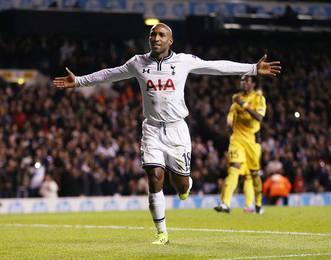 1 - The Magic. A short three part series looking at why the FA Cup is so special. One of the truly magical days in the footballing calendar is going to occur in the next few days. The draw for the Third Round of the Football Association Challenge Cup or the F.A. Cup or as its known simply THE Cup. No other trophy can drop its name and retain its identity. That’s the magic that encompasses this competition. The oldest and most famous cup competition in the world. Its history stretches back more than a 140 years to before Spurs were formed. It has its own special pageantry and customs that are known to millions around the globe.
0 Comments
 Erik Thorstedt or Erik the Viking as he was known after a popular film of the time was a firm favorite with the supporters, joining us in 1988 from IFK Gothenburg. He made a total of 218 appearances in goal for the club including being in the 1991 FA Cup winning team. He won 46 caps whilst he was at Tottenham. Left - Erik in training.  When Paul Gascoigne joined Spurs from Newcastle in July 1988 for a British transfer record of two million pounds many saw him as the kind of footballing genius that comes along once a generation. Others mistook his uncontrolled love of life as being a buffoon but this force of nature went on to become a national icon. The story is that at the end of his first training session at Spurs the other players applauded. They wouldn’t be the only ones blown away by his skill.  Congratulations to Jermain Defoe who is now Tottenham Hotspur’s top scorer in European competition. His penalty (his first in Europe) at home to Sheriff took him to 23 goals, one ahead of Martin Chivers. Important Note- There appears to be some confusion over Jermain’s European record. I’ve seen several variations, even some normally reliable sources providing conflicting information (1). The goal information provided here has been kindly verified by Andy Porter, the Clubs Official Historian. I thank him for his time and kind assistance. That is in addition to UEFA’s view (2).  The men who made Spurs The latest in Martin Cloake’s series about some of the key figures who made the club what it is. Peter McWilliam Peter McWilliam is the second of the four managers who established The Spurs Way, coming after John Cameron [ED – LINK TO CAMERON PIECE] and laying the ground for Arthur Rowe and Bill Nicholson. McWilliam was appointed in December 1912, after a four-year period in which the Spurs directors had taken on the manager’s responsibilities. After 10 defeats and three draws in the first 13 games of the 1912/13 season, shareholder pressure forced the directors to take on a full-time manager. McWilliam had been one of the great players of the early game. He had captained Scotland and played a key role as half-back in the great  It’s often been said that Spurs are most successful when there is a Scotsman centrally involved, and over the years some of Scotland’s finest players have worn the famous lilywhite shirt. The first of Tottenham’s flying Scotsman was John Cameron. Born in Ayr, Cameron played for the famous Scottish amateur side Queens park before moving to Everton, where he played as a centre-forward before moving to the inside-forward’s slot. In 1898, Everton placed him on the transfer list, a move thought to have been influenced by Cameron’s activity as secretary of the newly-formed players’ union. |
Features
Flying Down to Rio History of T.H.F.C. Tribute to Bill Nicholson Talking Tottenham Early Legends The Road to Turin International Connections Hotspur Towers Most Read Articles
The 100 Year War Interview with Marina Sirtis A Long Dark Shadow By Royal Appointment School Report: An Insight into the Younger Eric Dier Dear Jimmy All Change At Spurs Hotspur Towers History Of THFC: Part 1 Passage to India: Rohan Rickets Thanks For The Memories Our Tommy Carroll The AVB Files: Part1 The Lilywhites You The Jury The Hand Of Hugo Connection - Argentina Creating a Reputation One Hotspur Archives
August 2018
Categories
All
|
 RSS Feed
RSS Feed

